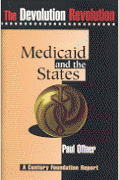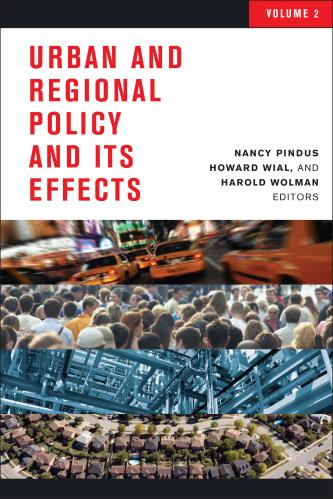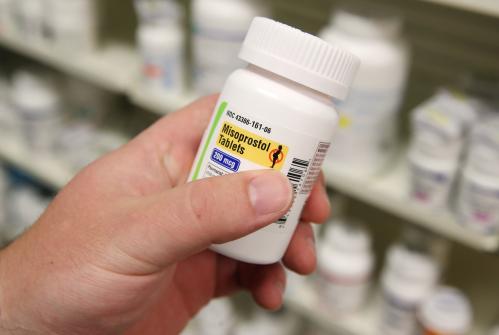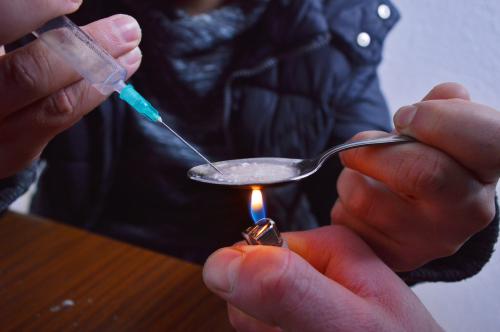Most people who cycle through our criminal justice system have serious health care needs. Three out of every five state prisoners and sentenced jail inmates have a substance abuse problem. Half of state and federal prisoners and two thirds of jail inmates are in serious psychological distress or have a history of mental illness. Substance abuse and mental illness surely contribute to the difficulty many individuals have escaping the criminal justice system: two-thirds of those released from prison will be rearrested within three years. Jails and prisons provide some treatment services, but what if we increased access to treatment in communities, so that people could get help before they get into trouble? New research shows that offering broad access to treatment for these problems is not only compassionate, but also a cost-effective way to reduce crime rates.
One way to increase access to care is to open more treatment facilities throughout the country. Existing facilities often operate at capacity because of limited funding, so that those who want treatment cannot always find help. Sam Bondurant, Jason Lindo, and Isaac Swensen studied what happened to crime when local substance abuse treatment facilities opened or closed. Because facilities are likely to be located in communities where the need is greatest, a simple cross-sectional analysis might show that the presence of a treatment facility is correlated with higher crime rates. Instead, the authors looked at within-county changes over time in the number of facilities and crime rates. This allowed them to see whether a change in access to treatment led to a change in crime, after controlling for a variety of other factors that might independently affect crime (like unemployment rates and the size of the police force).
The authors found that an increase in the number of treatment facilities causes a reduction in both violent and financially-motivated crime. This is likely due to a combination of forces: reducing drug abuse can reduce violent behavior that is caused by particular drugs, as well as property crimes like theft committed to fund an addiction. Reducing demand for illegal drugs might also reduce violence associated with the illegal drug trade. The authors estimate that each additional treatment facility in a county reduces the social costs of crime in that county by $4.2 million per year. Annual costs of treatment in a facility are approximately $1.1 million, so the benefits far exceed the costs.
Jails and prisons provide some treatment services, but what if we increased access to treatment in communities, so that people could get help before they get into trouble?
A primary obstacle to increasing the number of substance abuse treatment facilities is NIMBYism: residents worry that if such a facility moves into their neighborhood, it will attract drug users and criminals and local crime will go up. While this study can’t look at the precise locations of crime within a county (a topic for future research), it strongly suggests that such fears are unfounded. The net benefit at the county level implies that there are ways to make everyone better off. If treatment facilities draw drug users and criminals away from neighboring areas, then the areas that are now safer should be happy to subsidize both the cost of the facility and an increased police presence nearby.
Another barrier to treatment access is cost: many people who need treatment don’t have health insurance, and so the care they need — even when available nearby — is unaffordable. (And without paying customers, it’s tough for treatment facilities to stay open.) Heifei Wen, Jason Hockenberry, and Janet Cummings looked at the effects of increasing treatment access via state Medicaid expansions. Between 2001 and 2008, several states expanded Medicaid access to low-income adults without children (the population most at risk for criminal activity) via so-called HIFA waivers.
The authors found that when Medicaid expanded, both violent and property crime rates fell. The authors argue that the effect is driven primarily by increasing access to substance abuse treatment: they find that Medicaid expansions increased the number of people receiving such treatment by 20 percent. It’s possible that Medicaid expansions affect criminal behavior through other channels as well — for instance, it also increases access to mental health care and reduces financial instability. But assuming that substance abuse treatment was the main driver of effects on crime in this setting, the authors estimate that a ten percent increase in such treatment (at an annual cost of $1.6 billion) yielded an annual benefit of $2.9 to 5.1 billion in avoided crime. That’s a big return on investment.
A new paper by Jacob Vogler considers the effects of Medicaid expansions in more recent years (through 2015), due to the Affordable Care Act. He emphasizes the benefits of access to health insurance for low-income adults as a package: that is, he does not try to tease apart whether effects are due to access to substance abuse treatment or something else. Indeed, since substance abuse and mental health problems are often intertwined, it seems reasonable to assume that treatment for one is effectively treatment for both, and reducing stress and financial pressures associated with healthcare costs surely matters too. At the same time, increasing access to health care including prescription drugs might help fuel addiction (particularly opioid addiction), and this could increase crime as a result. This appears unlikely, but it could counteract some of the crime-reduction benefits; the net effect is what matters, and this is what Vogler looks at.
He finds that Medicaid expansions have reduced violent crime by 5.8 percent and property crime by 3 percent. As one might expect, effects were larger in places that had higher pre-expansion uninsured rates among individuals subsequently eligible for Medicaid (that is, where more people were affected by the policy change). Vogler estimates that the ACA’s Medicaid expansions resulted in cost savings of $13.6 billion due to the reduction in crime.
Previous studies had shown that providing substance abuse and mental health treatment makes the individuals receiving that treatment better off. But these are the first studies showing that increasing access to treatment makes the entire community better off by reducing violence and property crime. Reducing crime could, in turn, lead to lower incarceration rates. This is a better outcome for everyone. Would-be offenders can maintain their roles in the community and with their families rather than being sent behind bars, and would-be victims can avoid needless suffering. With the social benefits of expanding treatment far outweighing the costs, this is surely one of the smartest investments any community can make.








Commentary
New evidence that access to health care reduces crime
January 3, 2018